While considered relatively simple as a visual, tattoos that are imbued with meaning and often sought by those less familiar with the tattoo studio environment can require a set of skills or attributes beyond just tattooing alone. The materials of tattooing beyond the machinery include the sentient surface, in the form of the skin of another human being. The tattooist must work with all materials of tattooing to effectively perform their role.
This autoethnographic account of tattooing a small walk-in tattoo elucidates on how as a practitioner, the personality of the individual performing the tattoo is required to be present to ensure a professional quality of practice. The account then goes on to outline how the shared space that is created between client and tattooist through the social and durational nature of tattooing can impact upon the practitioner. The account illustrates how the occupational role of the tattooist expands beyond materiality in isolation, and assists in enriching otherwise limited understanding of tattooing from the perspective of the tattooist.
(Names changed for confidentiality purposes)
Alice came into the studio with who I assumed to be her mother, but as I later found out through the conversation that occurred during the tattooing process, was actually her step-mother. My introduction to Alice as a client was based on my availability to tattoo at the moment in which she happened to enter the studio, versus that of my colleagues, who were all tattooing or about to be tattooing at that point. As I sat on the computer, scanning in a design I had prepared for a future upcoming appointment, a colleague who happened to be at the desk area and dealing with Alice’s request shouted to me, “Adam, do you want to make some money?”. I knew that that meant performing a walk-in tattoo (tattooing without a formal appointment). Despite being an important part of the role of the early-career tattooist, I often dislike doing walk-in tattoos for reasons I will now outline.
Walk-in tattoos tend to require a lot of time to set-up the equipment and create a design that suits the client intention, comparative to how long the tattoo takes to complete. They also can be difficult to place on the body in a way that appears visually correct based on the variable ways in which the tattooed area can be seen, and can thus take multiple attempts to get right (wrists are a good example of this, as a design may appear central when relaxed, but aligned more to the left or right when the arm is bent). Tattoos of this nature tend also to be more spontaneous in how they have been approached by the clients, who often say things such as, “I knew if I didn’t get it now then I’d probably never get it”. This means that as a tattooist, I have to contend with the knowledge that the client to whom I am making a permanent mark upon may not desire the tattoo in the near future in the same way as they do the day it is created, in contrast to those who have considered a piece for a prolonged period of time. This is not always the case however, and sometimes clients simply lead busy lives working irregular shift patterns, and as such cannot commit to a formal appointment.
As walk-in tattoos are generally relatively small (typically taking under 20 minutes of actual tattooing), every aspect of the piece is explicitly visible, including any lines or colour-packing that is less successful than other areas. With larger tattoos where there is more coverage, factors such as this are less visually apparent due to other details of the overall composition. This means that there is a greater requirement for skilled craftspersonship, which as a junior practitioner, is less honed than that of my senior colleagues. Coupled with the acknowledgment that many walk-in tattoos (from my experience of both tattooing and working on the studio desk) are sentimental in nature to a varying extent, the level of responsibility to produce a high-quality output feels greater, making tattooing of this nature as a junior tattooist particularly anxiety inducing.
On an objective economic level; walk-in tattoos will generally be charged at £40 (the studio minimum charge), from which I will earn £20. Should the tattoo require a free touch-up due to any pigment being lost in the healing process (which can occur for numerous reasons), then the full process of setting up, tattooing, and cleaning down the work station must be repeated, with no economic gain. In some cases, walk-in tattoos can lead to returning clients for larger pieces that are more suited to the tattooists preferred style of working, leading to greater economic gain over a prolonged period of time. Often, however, walk-in tattoos are sought by those who generally choose to have only a few smaller pieces, and if they return, may request tattoos that are similar in size, placement, and the difficulties that can accompany this that have been outlined.
Examples of walk-in tattoos are shown below. As evident in images 2 and 3, in some cases clients request tattoos that would be considered upside-down by conventional standards, as they report to favour having the designs 'facing them' rather than being presented to an outsider.
Alice adopted a demeanour that suggested fragility and resilience simultaneously. Writing this with retrospective understanding of Alice’s biographical narrative may make such a statement appear insincere, or as an additional attribute falsely remembered given some of her later learned contextual background – but this is not the case. I distinctly remember detecting a sense of hardship in the moments of our first interaction; a sense I only picked up on through having encountered people close to me who have lived through difficult or traumatic experiences in the past, and been able to continue to survive in the World without being overcome with fear. Alice had a child-like wisdom to her presence; child-like in the sense of engagement and presence with the moment, not considering the before or after, and wise in the acknowledgement that nothing was forever, and thus recognising that enjoyment is a necessary condition of living a rich life. These assertions may be my personal projections and not representative of Alice’s own sense of self, however they are necessary to include to elucidate on the variable factors that contribute to the experience of the practitioner, and how that affects the nature of practice.
She looked like she was in her early 20’s at first glance, but after talking for slightly longer it seemed that she may have been closer to her later 20’s. Alice told me in a soft midlands accent that she would like to have an infinity symbol with a heart and paw print incorporated into it, with the name of her deceased dog underneath, tattooed on her forearm. As she described what she wanted, her step mother showed me her own wrist, which was a similar design to that which Alice had described, and while showing me her tattoo said, “just something like this”. Alice’s step-mother adopted a maternal and protective demeanour, but in such a way that she respected Alice’s independence to make her own choices, and merely wanted to support her when necessary. This was evidenced in the way in which they both interacted with each other, in a manner that reminded me of siblings who have a significant age gap, more so than mother and daughter. A design such as what Alice had requested is not something I would produce for artistic gratification, but is often expected to be requested with walk-in tattoos, as such subjects are commonly reoccurring.
I had recognised the design on Alice’s step mothers’ arm from seeing it on various other clients. This is often the case with smaller tattoos that can circulate on platforms such as ‘pinterest’ with titles that relate to the subject (e.g. ‘mother and daughter tattoo’ or ‘infinity symbol tattoo’ etc). As the tattoo for Alice was motivated in part by it matching her step-mothers, I opted to look for the source image from which her step-mothers tattoo was produced using a ‘google images’ search. Numerous versions of the same design where displayed, as both graphic symbols and tattoos. I found a version of the design that most closely resembled the source image I was basing the design upon, and dragged the image into Adobe Photoshop.
In an attempt to avoid directly copying the design in its entirety, I adjusted the thickness of part of the forms based on my own aesthetic sensibilities, by selecting the outlines of the shapes, contracting the selection by around 7 or 8 pixels, feathering the edges, and deleting the appropriate selection. I then added a text box underneath the image, and found 3 different fonts that I felt confident tattooing, all of which were relatively simple. From my experience creating tattoos of a similar nature, clients tend to opt for cursive or italic fonts, and I went to select a font from the dropdown selection, I noticed that those at the top where the styles that had been most frequently used.
On an a4 sheet, I created 3 versions of the design with the different writing styles. These where copied and pasted, and adjusted slightly in size to make them larger, before the process was repeated, and the sheet printed to show to Alice on her return into the studio. The pieces where composed in rows, and each row was cut out, allowing Alice to be able to select first a size she would like to have the tattoo produced at, and then which versions of the design she would like to opt for. After preparing the design, I set up the tattooing booth, brought an additional stool for Alice’s step-mother to sit on during the procedure, and came back to the front desk awaiting Alice.
Alice and her step-mother arrived with various shopping bags, and a bottle of Lucozade, assumingly in the knowledge that blood sugar can be lowered during the tattooing process and it is necessary to restore it. After greeting both of them, I approached the seating area and showed them the design, which they seemed very happy with. Opting for the italic font and smallest version of the design, I placed the paper cut out against the intended area of skin to be tattooed to test its suitability. Alice was very easy-going with this process, and seemed content with each step. I asked if she was sure on everything, in case she was uncomfortable to state that she would like any alterations in the sometimes-intimidating setting of a tattoo studio. I attempted to make it apparent in my tone of communication that I was happy to make any alterations if necessary, which I absolutely was, but she told me that everything was perfect, and that she really liked the font. Her step-mother echoed these sentiments.
After making the stencil, I invited Alice and her step-mother to my tattooing booth, which is located upstairs and is independent from the other tattooing areas. I have deliberately attempted to create a space that is far removed from the traditional tattoo shop in many ways, in that the music selection is often ambient or jazz themed, and the designs and images on the walls are eclectic in source and not centred around the typical motifs of skulls, roses, demons etc. This is in order to both satisfy my personal aesthetic sensibilities, and assist in making the client feel more relaxed in a potentially new environment. As we entered the room, I invited both Alice and her step-mother to hang up their jackets, place their bags wherever they would like to, and to take a seat.
As I prepared and placed the stencil on Alice’s arm, I began the ‘small-talk’ process that is a necessary part of the durational tattooing procedure, and often ends up being the gateway for real conversation to enter. I asked Alice if she had other tattoos. She showed me her existing pieces, which where themed around her love for music and her pets, and where a similar size to the small tattoo she was getting today. As I applied pressure to the stencil, I noticed that Alice’s arm where relatively thin and seemed fragile. The necessity of touch in various aspects of the tattooist role is inherently intimate, and I felt that I wanted to be mindful of Alice’s comfort level on a physical and psychological basis. As the stencil dried, I invited Alice to take a seat on the tattooing bed and get comfortable while the stencil dried for 10 minutes, while I would go and get a number of needle cartridges to complete the piece. I offered both Alice and her step-mam a drink of water, to which they were thankful, but declined, before setting up the remainder of the equipment.
I returned, and asked Alice to lay face down on the tattoo bed with her arm out on a cling-film wrapped arm rest. I asked Alice if she was comfortable or wanted to adjust any aspect of how she was seated, but she seemed comfortable how she was. I informed Alice that I was about to begin the process of tattooing, and that if at any point she would like to stop for any reason, to just let me know. After positioning the printed design next to Alice’s arm at the same orientation of the tattoo, I began the tattooing procedure, asking how it felt after creating the first line. She expressed that it felt fine, which I didn’t doubt through what her physiology communicated to me, as her body seemed relaxed, and her breathing steady. As I continued tattooing, I asked Alice if she was in employment or in education or anything of a similar nature. It was at this point this she told me that she was in remission from a brain tumour and had had an operation 4 years ago in Sweden, from which she was still recovering.
Not wanting to pry too much into this topic, I navigated around it as respectfully as possible, trying to decipher how comfortable a topic of conversation that it was for Alice and her step-mother. In a nonchalant manner, they both went on to explain how Alice, her siblings, parents, and step-parents had travelled to Sweden for 6 weeks to have the operation. I didn’t get the impression that the topic was uncomfortable in any way to discuss, and felt more of a sense of triumph than sadness, which I found admirable. They went on to tell me how expensive the cost of living was in Sweden, and how they didn’t care too much for the food there. They then turned the conversation on to me, and asked what questions such as, ‘what is the strangest tattoo you’ve ever done’, to which my answer was likely unsatisfactory due to my relative lack of experience to other tattooists who have anecdotes of tattooing obscure subject matter, or intimate body parts.
As the tattooing progressed, the conversation moved back and forth through different topics, and Alice’s step-mother expressed how her tattoos are imbued with meaning. Alice stated that getting this tattoo had aroused her appetite for getting further pieces. I asked what subject matter she would like, and she stated she hadn’t thought of anything at that point, but likes the idea of tattoos that have a humorous element. Humour appeared to be a big part of how Alice and her family have navigated through what I can assume would have been a troublesome and traumatic period of time, and on numerous occasions Alice’s step-mother would explain various ‘in-jokes’ that they had together to me. Alice suggested that an eye-ball would be a good subject matter for a tattoo, to which her step-mother laughed and agreed enthusiastically.
When I asked why, it transpired that at some point in Alice’s treatment, damage was caused to her right-eye. Alice was lying face down as the tattooing commenced, however as this was explained to me, I recalled how she wore her fringe over her right eye, making it difficult to notice. Alice’s step-mother explained how part of their ‘banter’ involved mocking each other on aspects of themselves, and she stated that occasionally they would send text messages of eye-themed ‘emojis’ as part of their rapport. It seemed apparent that this mockery came from a place of love and acceptance, and was part of the healing process of dealing with an otherwise difficult permanent change in aesthetic appearance and general health. I considered how Alice’s causal and easy-going nature to the minute details of the tattoo that I was producing for her was likely present as comparative to her eye, the tattoo particulars where almost superfluous.
As I was tattooing the final details of Alice’s tattoo, I couldn’t help but feel an emotional resonance with her spirit and a sympathy for her; sympathy that was not necessary given her gracious approach to life. I recognised how my sympathy was not exclusively to her and her triumphant story of recovery from a life-changing ordeal through positivity, a loving community, and humour, but to an almost archetypical personality type that I recognised. Her gentle, passive, and kind demeanour coupled with her midlands accent reminded me of a figure in my life who shared many common experiences of dealing with difficulties with resilience and determination. Though the biographical specifics between Alice and my connection differed, the nature of narrative shared similarities. This connection between Alice and the figure to who she represented to me was only made upon later reflection, but felt in the moment of the experience as a gathering of emotion that was felt in my body, and expressed through the sincere presence of compassion and wish of wellbeing for Alice and her family. This feeling stuck with me.
Upon completion of the tattoo, I invited Alice to take a look at it in the mirror. Before doing so, she showed her step-mother who said she thought it was ‘lovely’, and took a photo to send to her other family members. I realised that despite the tattoo evidently being a homage to a pet, at no point during our conversation did the specifics of the tattoo meaning come up. Alice told me that she liked the tattoo, and after photographing it for my own records, I wrapped the piece in cling film. While doing so, I asked Alice and her step-mother what their plans where for the remainder of the day. Alice informed me that she had her first kick-boxing lesson later that evening, which she said she was learning as a means of self-defence and to get build up some strength. I considered how this exemplified the impression of her resilience of character that I had previously noted. I told Alice and her step-mother to take their time getting their belongings together, and that I would meet them at the front desk when they were ready and go over the aftercare procedure.
While waiting at the front desk, I annotated an aftercare slip with the key details of how to look after a tattoo, in preparation to explain vocally. As I explained the procedure to Alice, I noticed again how she had her fringe covering her eye, and felt emotionally stirred in the recognition that despite the abundance of strength and ability to deal with the problems she had been dealt, Alice must have felt a sense of self-consciousness about her appearance to try and obstruct her eye from her vision of others. This reminded me that my short experience with Alice or many other clients can only ever be telling of a limited amount the multiplicity of realities that exist in each individuals conscious experience of existence.
Later that evening, I told my partner about my experience in tattooing Alice, and I found myself getting emotional while doing so. Even in recording the experience in writing, I find the presence of emotion that cannot be categorised in the singular. It is more the amalgamation of compassion for others in recognition of the fragility and impermanence of existence, sadness surrounding the insecurities ever present in others and in myself that are culturally and sociologically ingrained, and admiration for the resilience of the human spirit to prevail. The presence of these emotions may be uniquely my own, based on my individual nature and sense of being in the World, but the experience of being personally affected by the presence of a client while tattooing is not just unique to me.
Tattooing is a medium through which many people express what they deem significant. Combined with the durational and thus conversational nature of conduct, many clients open up about their lives and share aspects of themselves with the tattooist. The way in which that affects the tattooist can vary based on how their own personal baggage, with examples such as my account of tattooing Alice illustrating how factors such as client demeanour and a small amount of contextual background information can initiate an emotional response. In a more direct example, I have been in the studio when some of friends/colleagues have produced memorial tattoos, and have been in tears after the client leaves the studio. This autoethnographic is an attempt to illustrate how tattoos are produced on humans, by humans, and as such require the presence of a person, not just a practitioner. In counselling, the role of a supervisor is to assist the counsellor in dealing with the various issues that are experienced as a role of working with individuals. Perhaps a similar system would be valuable for the occupational health of the tattooist.
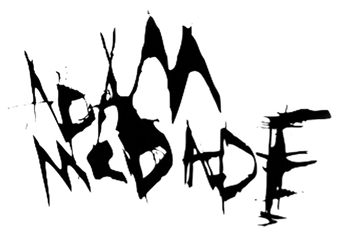
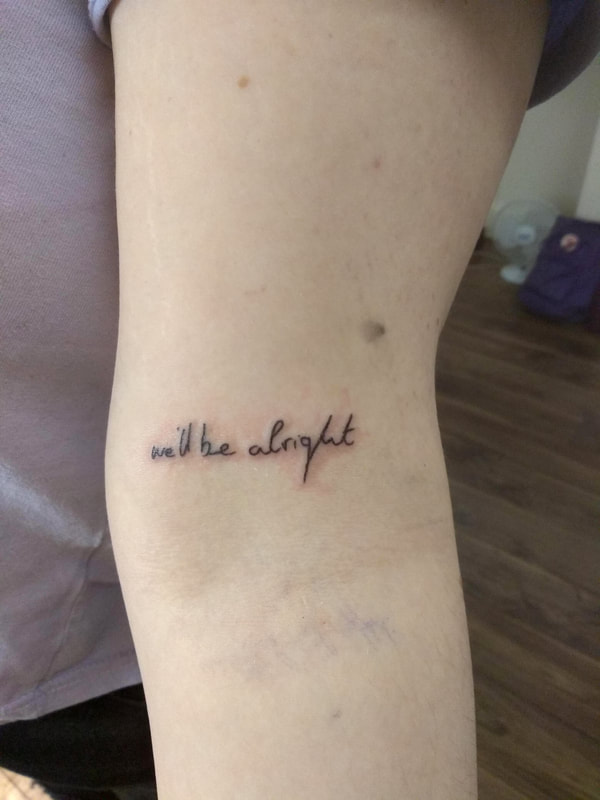
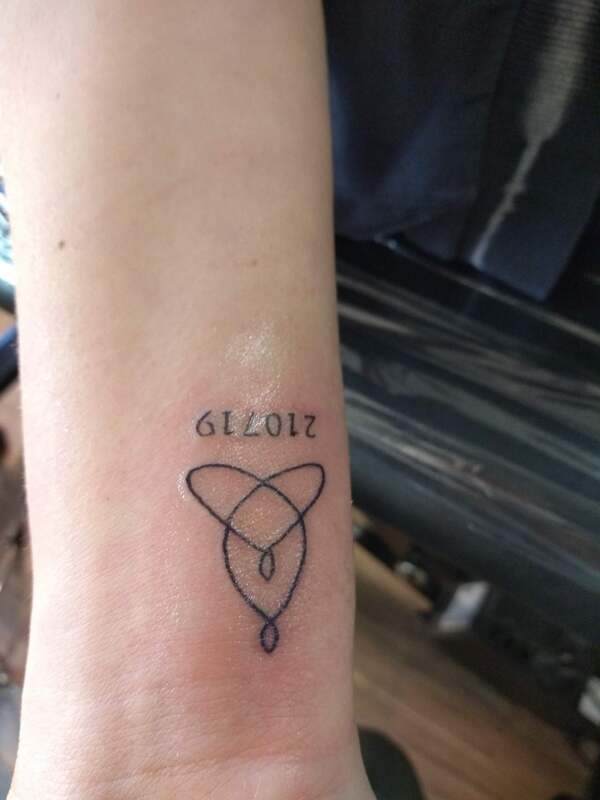
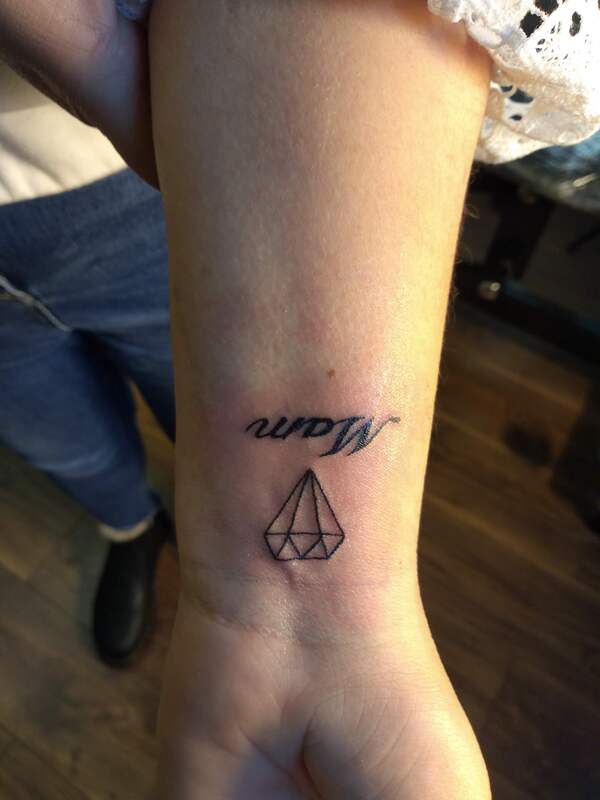
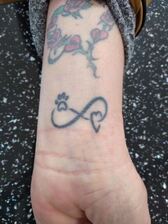
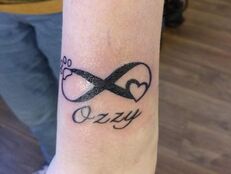
 RSS Feed
RSS Feed
